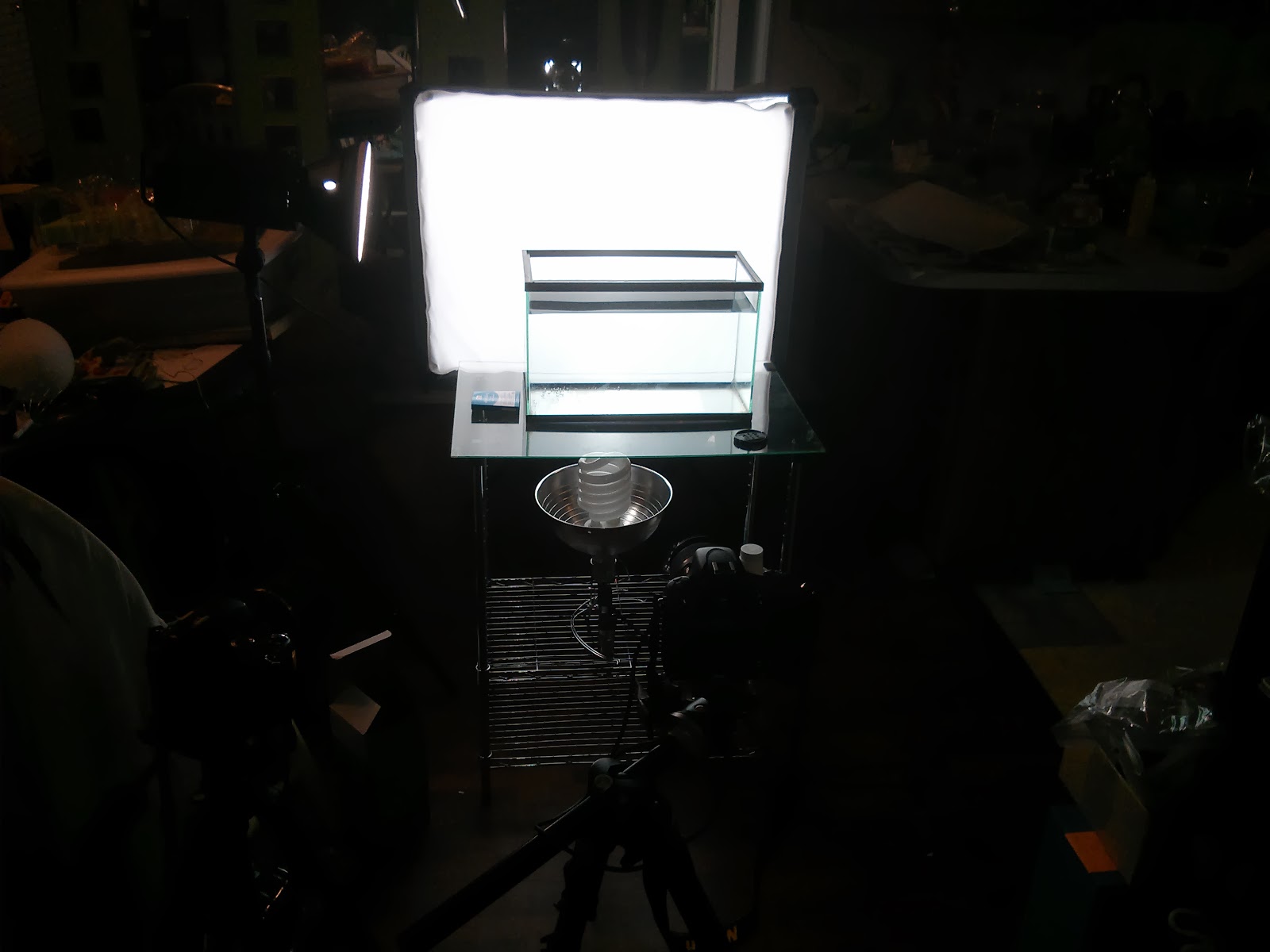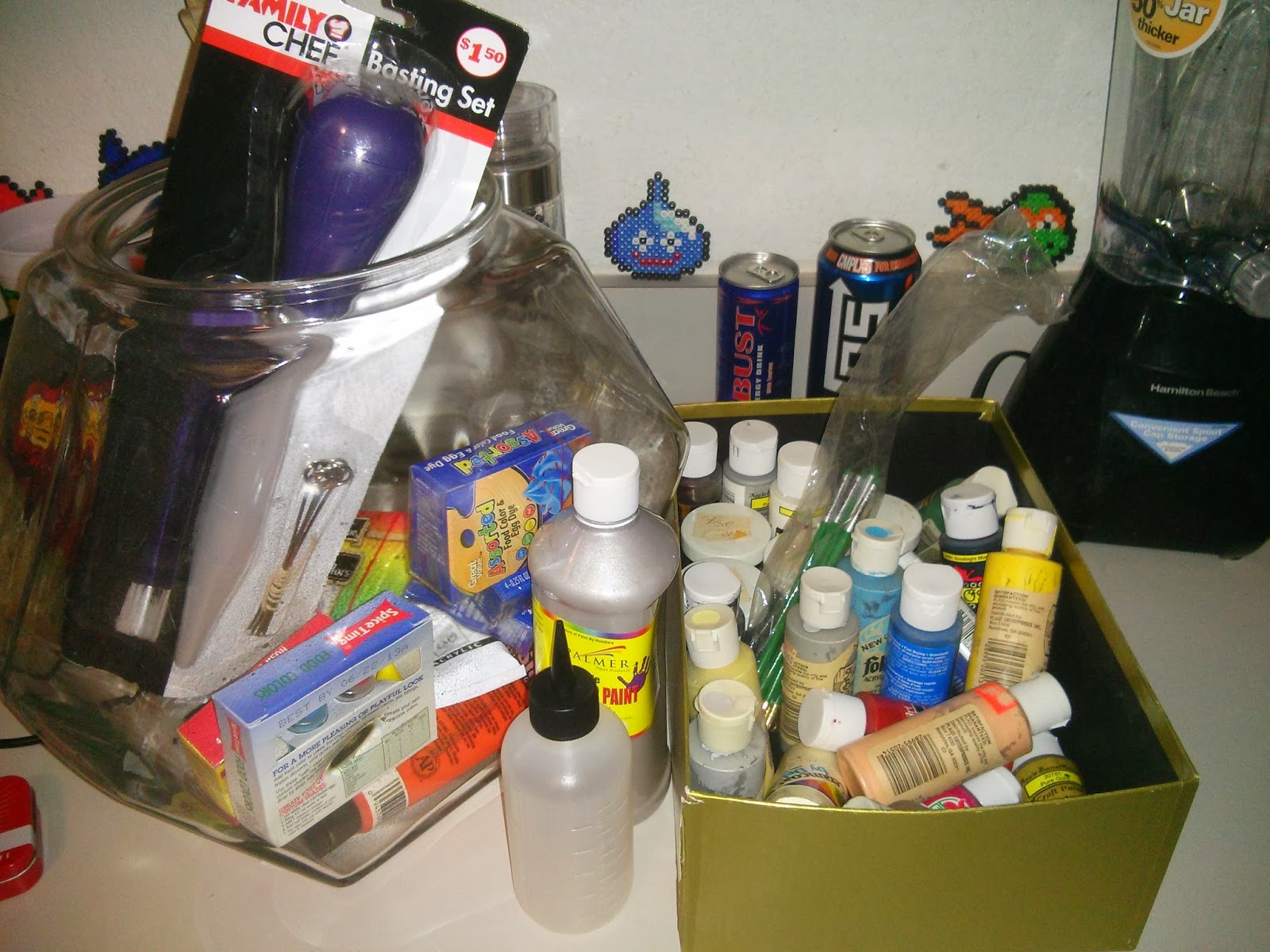"This body of work is a
photographic exploration of the attempt to control emotions through the use of
process within a confined space. Similar to abstract expressionist painting,
the process and technique are at the forefront of thought during creation,
allowing for intuition and chance to help the natural inherent life come forth.
The process itself characterizes how I often handle my emotions. They get
bundled up and put in a glass box, seen and interacted with from a distance.
Ultimately, pouring and dripping color pigment into a tank of water results in lush
hand-made atmospheric forms which in turn represent my pervading desire for
emotional control." The crafted artist statement...
Amber's Process Diary
Join me as I discover various art making methods and attempt to further my visual vocabulary.
Wednesday, April 30, 2014
Thursday, April 24, 2014
Veil and Unveil
To veil, rip, reveal, fog, cover, mist, cloud, pull and see. The eyes. Why are the eyes so revered? Why do we cringe when we cannot see? Why do we scrunch our eyes and strain ourselves when a fog settles in? Out of all the senses, sight gives us the most amount of information. Why then, am I attracted to the idea of covering up the information that I create? Is it to hide? Is it simply for effect? And then...with violence, or vengeance, or guilt, or desire... I forcibly rip and pull parts of the veil away. Why can I not pull all of the veil? These are my own memories that I am toying with...
My recent work is asking me too many questions... It feels like I'm following the rabbit instead of following the bird... .
Wednesday, March 12, 2014
Playing with more Encaustic
Atmospheres Progress Report
As I wander through the vast and lonely landscapes of oblivion I often stop to ponder the consequences of my journey. The sky above me churns as if in answer. Colors swirl and dance their way around my head. The outside realm mixes with my inside, creating a new moment in time. One that I can see forever.
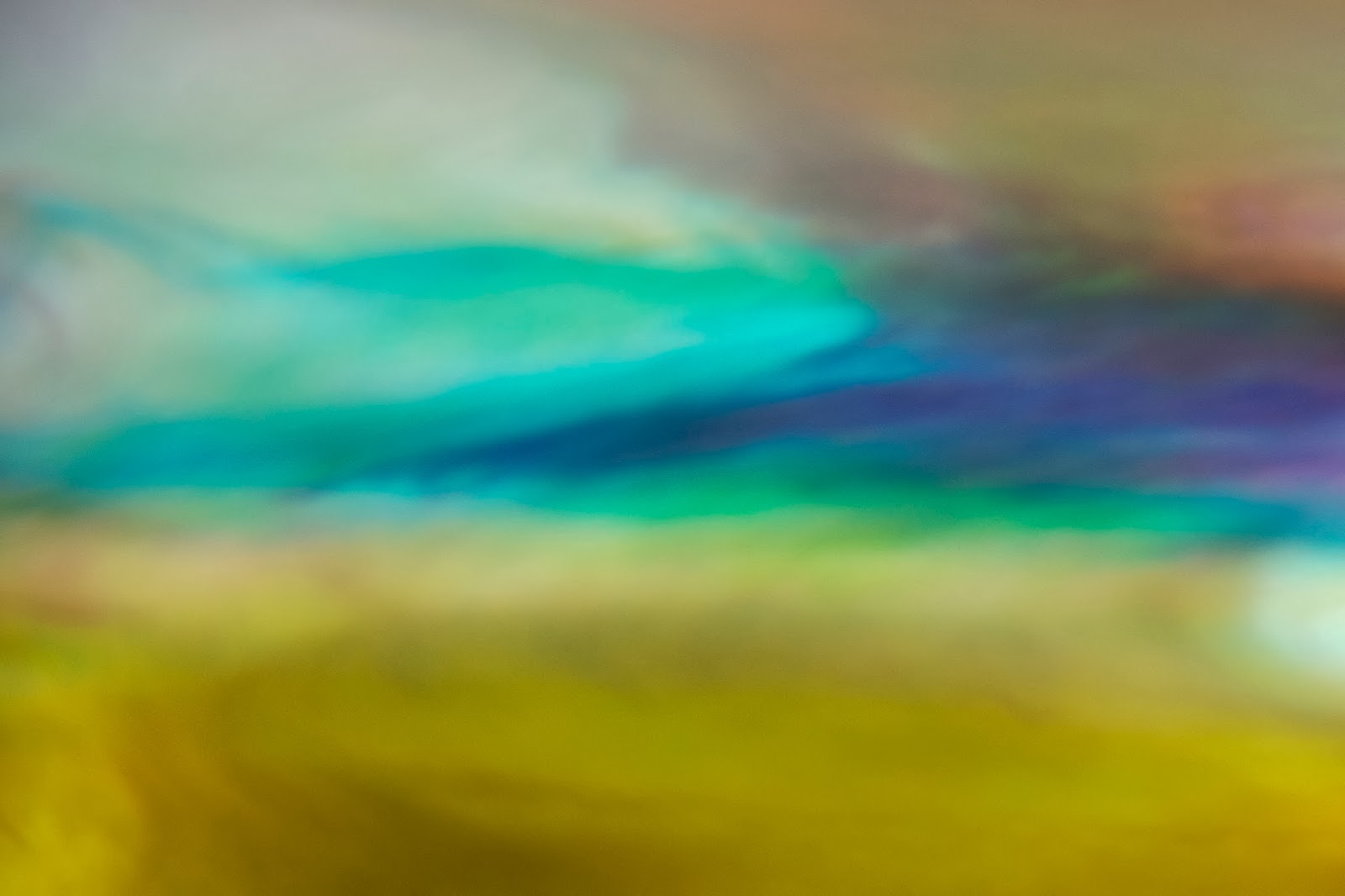
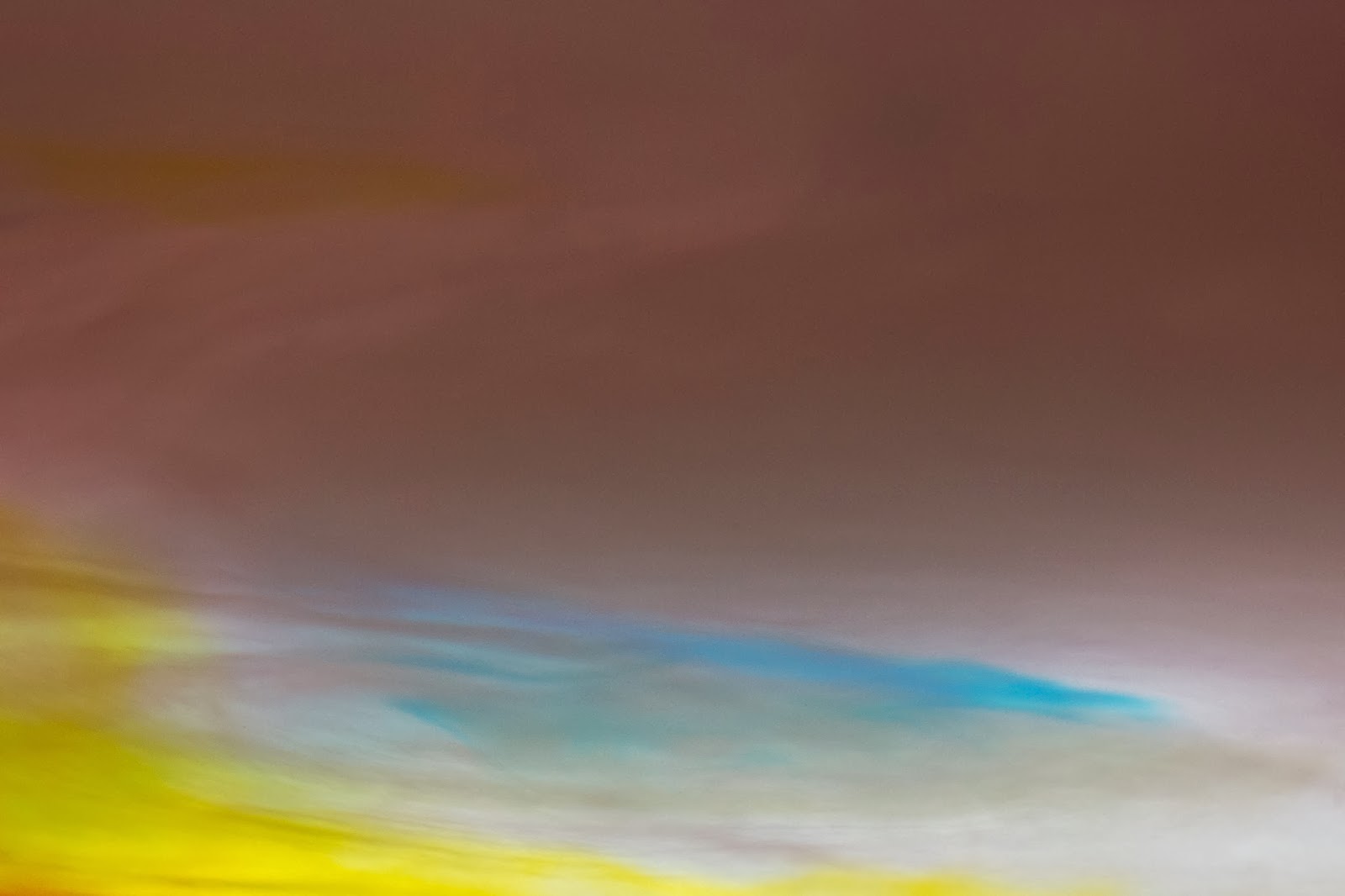
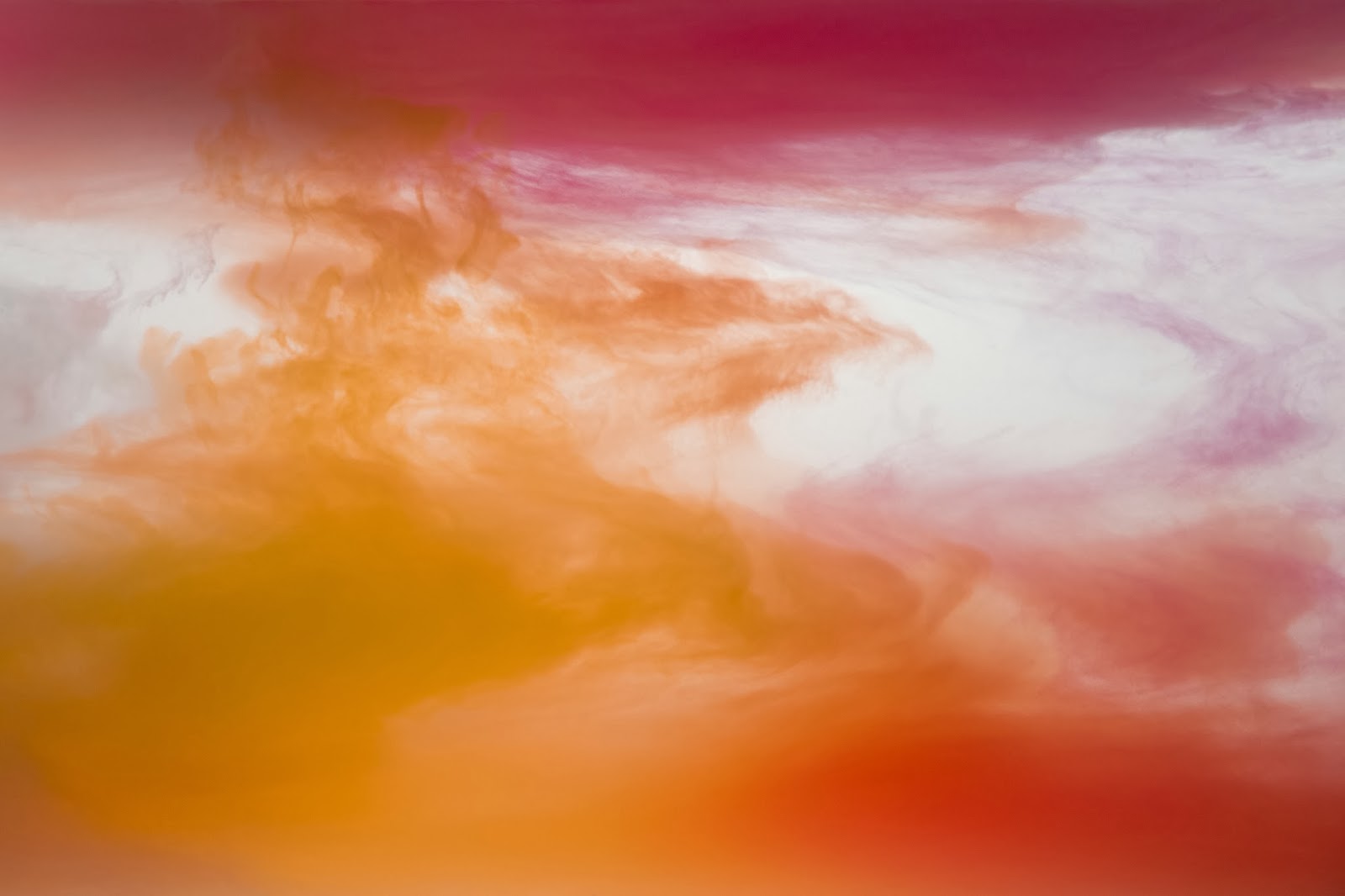
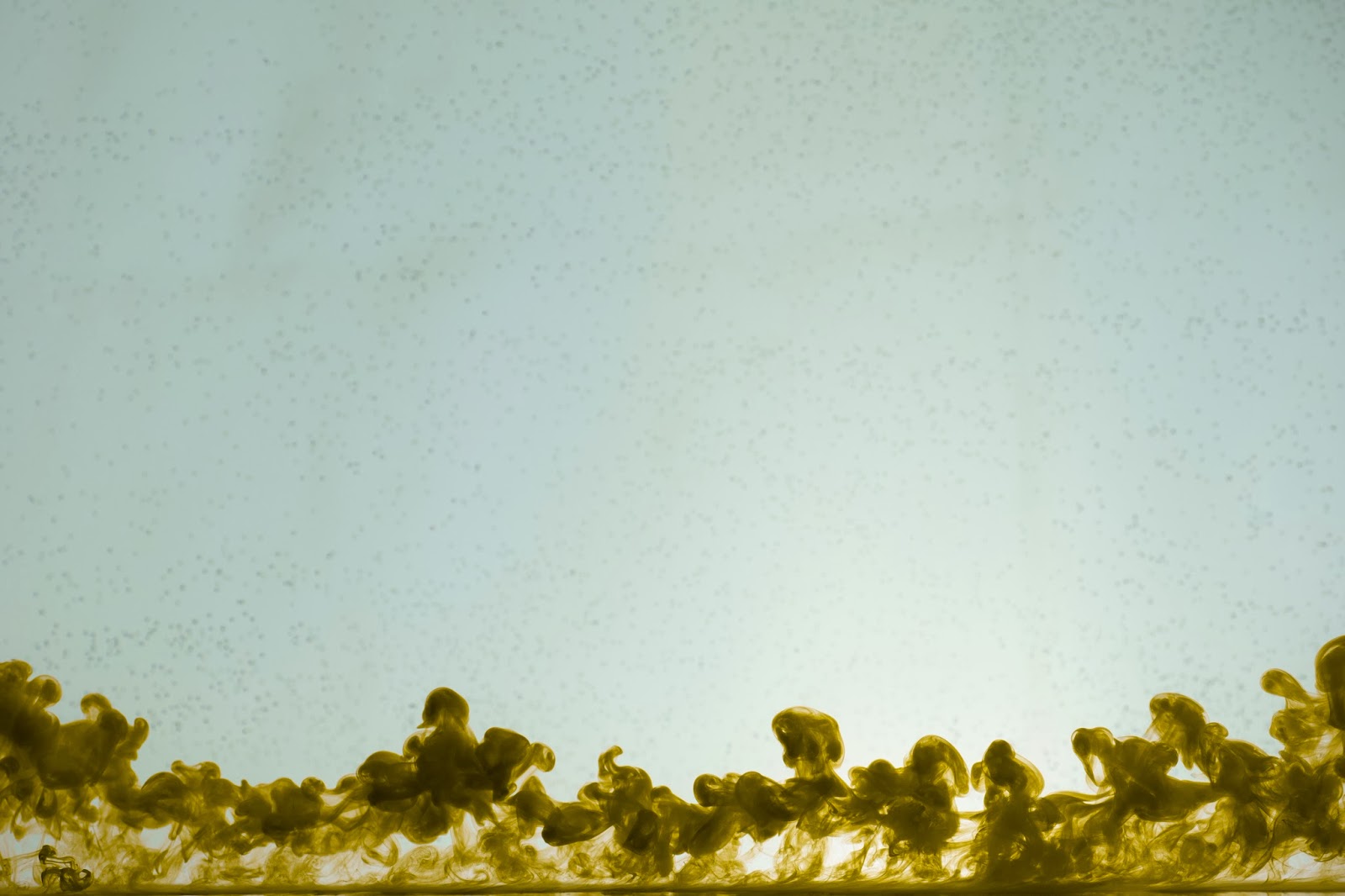




Tuesday, February 11, 2014
Cloud/Bloom Photography Progress
Progress is slow going, uphill, both ways, in the snow and barefoot.
Finding the right ratio of water to paint to create a light enough cloud but heavy enough bloom that will hold shape long enough to photograph is tough to say the least. AND AND AND since I'm so used to using dinky little book lights as my light sources - I didn't have enough light in the whole gosh darned house to work with a higher shutter speed and smaller aperture... Tough Twinkies! I laugh in the face of adversity! Mwahahaha!
...have some photos for your face to feed upon!
Finding the right ratio of water to paint to create a light enough cloud but heavy enough bloom that will hold shape long enough to photograph is tough to say the least. AND AND AND since I'm so used to using dinky little book lights as my light sources - I didn't have enough light in the whole gosh darned house to work with a higher shutter speed and smaller aperture... Tough Twinkies! I laugh in the face of adversity! Mwahahaha!
...have some photos for your face to feed upon!
Wednesday, February 5, 2014
New Idea
So, I had a wild hair that sprouted. (I won't tell you where, it's embarrassing.) I had a conversation with this little hair and it told me that I needed to figure out how to make an atmosphere for my sets. I agreed, and asked what its opinion was. It said that I should make atmospheres out of pickle juice and farts, at which point I promptly stopped listening and plucked it. But that thought stuck with me no matter where I went. That blimey fellow left its mark...
I did some research on color fields and pours. Some of the artists are: Clyfford Still, Stanley Hayter, Maurice Sapiro, and more.
Then I learned about Kim Keever (images below)...and my mind was blown clean off. CLEAN OFF. So clean in fact that I was able to reattach with no problems.

The long term plan: to create romantic/atmospheric paper landscapes/narratives by using a tank, water, paper (of course), and paint.
The short term plan: to figure out how to make clouds/blooms in water.
Why? This will help achieve a romantic atmosphere.
Then what? Figure out what paper forms will submerge properly in water, what distortions occur, etc.
Step 1: Ask myself a hundred questions why I want to do this. (Helps with figuring out how to word my reasons and make connections.)
Step 2: Gather materials.
Step 3: Experiment with different materials to determine viscosities, gravitational pulls, attractions, repellants, dripping methods, mixing ratios, etc.
Experimentation images to come!
I did some research on color fields and pours. Some of the artists are: Clyfford Still, Stanley Hayter, Maurice Sapiro, and more.
Then I learned about Kim Keever (images below)...and my mind was blown clean off. CLEAN OFF. So clean in fact that I was able to reattach with no problems.

The long term plan: to create romantic/atmospheric paper landscapes/narratives by using a tank, water, paper (of course), and paint.
The short term plan: to figure out how to make clouds/blooms in water.
Why? This will help achieve a romantic atmosphere.
Then what? Figure out what paper forms will submerge properly in water, what distortions occur, etc.
Step 1: Ask myself a hundred questions why I want to do this. (Helps with figuring out how to word my reasons and make connections.)
Step 2: Gather materials.
Step 3: Experiment with different materials to determine viscosities, gravitational pulls, attractions, repellants, dripping methods, mixing ratios, etc.
Experimentation images to come!
Sunday, January 12, 2014
Encaustic Adventure
In case you are confused, here is encaustic in a nutshell:
One must painstakingly wait for years, sometimes decades for bees to do their bee buzziness and make their wax. Since I can't wait that long, I will war with the many bee nations, invading and pillaging all that I can. The bees have taken to calling me The Painted Pirate and have created clever traps that I narrowly escape time and time again, but that is a story for another day.... After enough hives are invaded and ointment applied to stings, I must then seek out the evasive oil flowers. Yes, evasive. These flowers migrate from country to country and will even hop onto a boat and sail to a different continent to get away from you. The key to catching them is a golden Pok-e-ball, not to catch them with, these flowers are just Pok-e-geeks. So after I sneak up on them, I'll place the ball where they can see it and when they come into close enough range, I jump out and invite them to coffee and a good petal washing. (Always have a huge bucket and sieve for this process as the oil flowers are extremely dirty from all their evading.) During the washing, I harvest the pigment that falls off. The next step is the easiest: I add the wax and pigment inside a tiny volcano so that the ingredients will mix and be molten so that I can start painting.
So here are some pictures!
Not shown is the plywood that I use as a 'canvas'. These are 12"x12" and 3/4" thick.
In order:
1- This was achieved using a scraping technique.
2- I didn't document this step for this piece... I placed a color lazer printed image face down and burnished the hell out of it. My preferred weapon for this step is a metal teaspoon.
3- Spray it with water and start to rub the paper off (hoping that I burnished enough).
4 & 5- It's a lot like developing in the darkroom.
6 & 7- Tada! Oh and I added a string to the bottom so that the string in the image would connect.
8- Ask a painting friend to help paint an area.
9- Optional, add a layer of plain medium to the whole thing and done!
One must painstakingly wait for years, sometimes decades for bees to do their bee buzziness and make their wax. Since I can't wait that long, I will war with the many bee nations, invading and pillaging all that I can. The bees have taken to calling me The Painted Pirate and have created clever traps that I narrowly escape time and time again, but that is a story for another day.... After enough hives are invaded and ointment applied to stings, I must then seek out the evasive oil flowers. Yes, evasive. These flowers migrate from country to country and will even hop onto a boat and sail to a different continent to get away from you. The key to catching them is a golden Pok-e-ball, not to catch them with, these flowers are just Pok-e-geeks. So after I sneak up on them, I'll place the ball where they can see it and when they come into close enough range, I jump out and invite them to coffee and a good petal washing. (Always have a huge bucket and sieve for this process as the oil flowers are extremely dirty from all their evading.) During the washing, I harvest the pigment that falls off. The next step is the easiest: I add the wax and pigment inside a tiny volcano so that the ingredients will mix and be molten so that I can start painting.
So here are some pictures!
Not shown is the plywood that I use as a 'canvas'. These are 12"x12" and 3/4" thick.
In order:
1- This was achieved using a scraping technique.
2- I didn't document this step for this piece... I placed a color lazer printed image face down and burnished the hell out of it. My preferred weapon for this step is a metal teaspoon.
3- Spray it with water and start to rub the paper off (hoping that I burnished enough).
4 & 5- It's a lot like developing in the darkroom.
6 & 7- Tada! Oh and I added a string to the bottom so that the string in the image would connect.
8- Ask a painting friend to help paint an area.
9- Optional, add a layer of plain medium to the whole thing and done!
Subscribe to:
Comments (Atom)






















